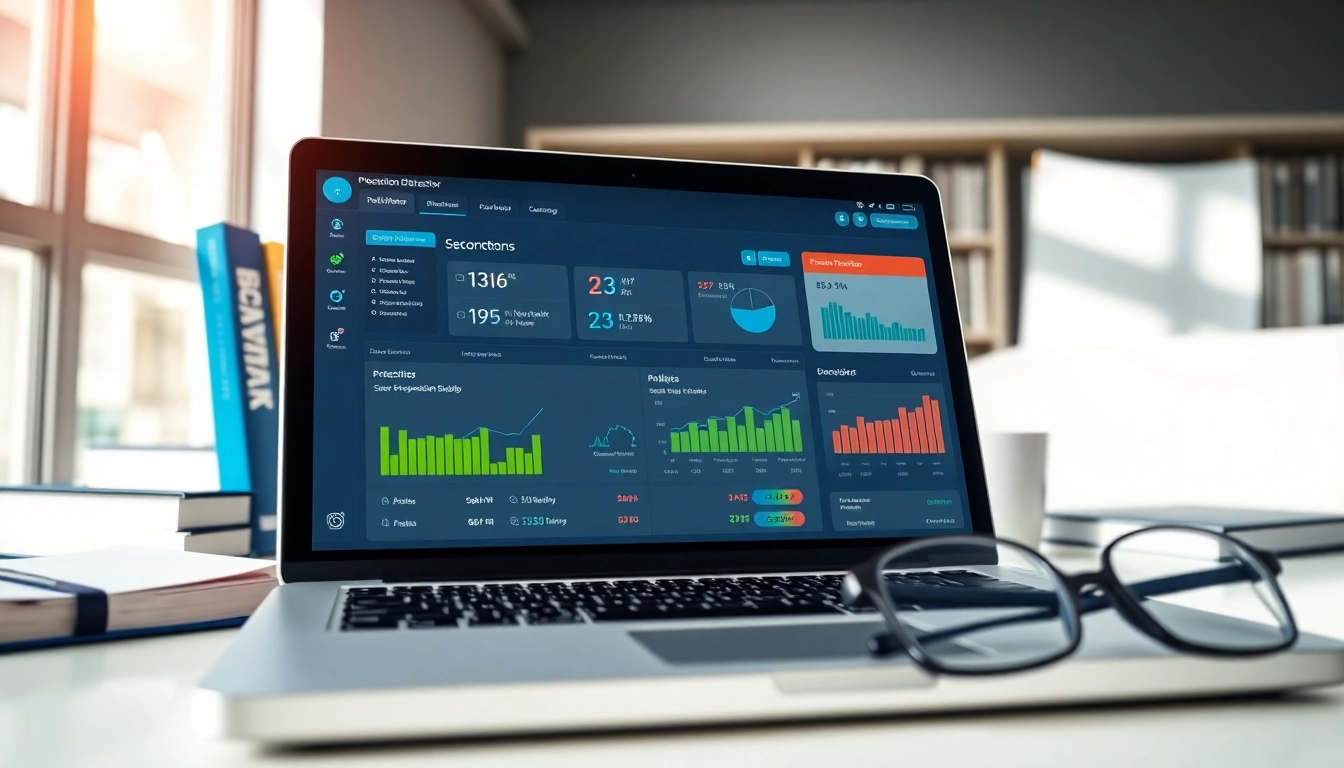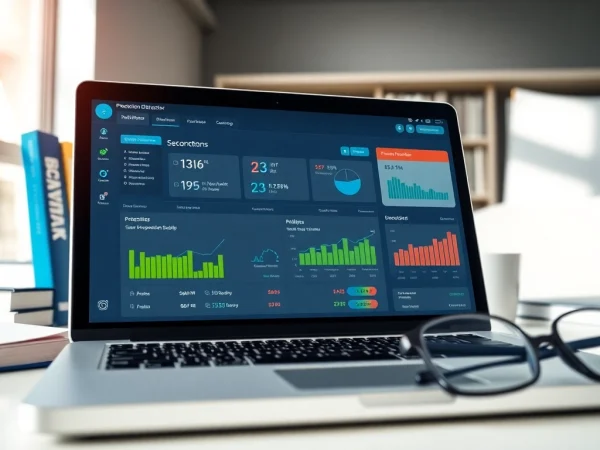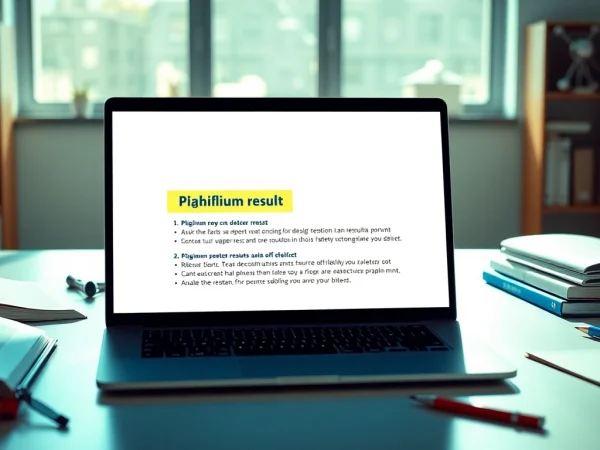Advanced Techniques for Using a Plagiarism Detector Effectively
Understanding Plagiarism Detection
What is a Plagiarism Detector?
A plagiarism detector is a tool designed to identify instances of plagiarism in written content. Plagiarism, in essence, encompasses the unauthorized use or representation of another author’s work, ideas, or expressions as one’s own without proper credit. This type of detection is crucial to ensure academic integrity and maintain the originality of written material in both educational and professional contexts.
How Plagiarism Detection Works
Plagiarism detection operates through sophisticated algorithms and databases. Here’s a breakdown of the process:
- Text Input: Users upload a document or paste text into the plagiarism detection software.
- Algorithmic Analysis: The software compares the input text against vast databases containing millions of documents, academic papers, articles, and websites.
- Similarity Detection: The algorithm identifies similarities by tracing patterns and matching phrases and sentences with existing works.
- Report Generation: Once the analysis is complete, users receive a report detailing instances of similarity, providing links to the original sources, and displaying a similarity percentage.
Types of Plagiarism Detectors Available
There are several types of plagiarism detectors available to cater to different user needs:
- Online Detectors: Web-based services accessible from any device with internet connectivity, often free or subscription-based.
- Software Applications: Programs that users install on their computers providing in-depth analysis capabilities.
- Specialized Academic Tools: Programs designed for educational institutions, offering features like integration with learning management systems and extensive databases.
- Real-time Checkers: Tools that check for plagiarism as the writing occurs, allowing for immediate feedback and revisions.
Why Use a Plagiarism Detector?
Benefits for Students and Educators
Students and educators benefit significantly from using plagiarism detectors. For students, these tools serve as educational resources that encourage original thought and writing. By receiving feedback on their writing, students can learn to paraphrase effectively, cite sources correctly, and improve their comprehension of research ethics. Educators can utilize these tools to uphold academic integrity, ensuring that student submissions are original and adhere to ethical guidelines.
Importance of Academic Integrity
Academic integrity is vital in educational environments. It fosters an atmosphere of trust and fairness among students and faculty. Plagiarism detectors help maintain this integrity by discouraging dishonest practices. Institutions often impose severe consequences for academic dishonesty, including failing grades or expulsion. The integration of plagiarism detectors in assignments reinforces the values of honesty and accountability.
Preventing Plagiarism in Professional Work
In the professional arena, plagiarism can damage reputations and lead to legal repercussions. Writers, researchers, and marketers use plagiarism detectors to ensure their content is original before publishing. In industries that rely on content creation, such as journalism and marketing, maintaining originality protects intellectual property and enhances credibility. Additionally, businesses can avoid potential lawsuits by ensuring that their materials do not infringe on others’ copyrights.
Choosing the Right Plagiarism Detector
Key Features to Look For
Choosing the right plagiarism detector requires evaluating several key features:
- Database Size: A larger database means more comprehensive detection. Look for tools that search through academic publications, websites, and other sources.
- Reporting and Feedback: The tool should provide detailed reports that include similarity percentages and links to original sources.
- User Interface: A user-friendly interface enhances the usability of the tool, allowing users to easily navigate through results.
- Integration Capabilities: Some detectors offer integration with learning management systems (LMS) or writing platforms for seamless use.
Comparing Free vs. Paid Tools
While many free plagiarism detectors are available, they often come with limitations such as incomplete database access, lower accuracy, and restricted functionality. Paid tools typically offer comprehensive features, advanced algorithms, and extensive support. It’s essential to weigh the pros and cons based on the intended use. For occasional users, free tools may suffice, while academic institutions or professionals may benefit from investing in a robust paid solution.
User Reviews and Recommendations
Before choosing a plagiarism detector, seek out user reviews and recommendations. Feedback from other users can provide insights into the tool’s accuracy, reliability, and overall performance. Websites like G2, Capterra, and Trustpilot host user-generated reviews, offering valuable perspectives that can aid in the decision-making process.
How to Utilize a Plagiarism Detector’s Full Potential
Step-by-Step Guide to Running a Check
To maximize the utility of a plagiarism detector, follow these steps:
- Prepare Your Text: Ensure your document is ready for analysis. Remove any formatting issues and save it in an acceptable file type (like .docx, .txt, or .pdf).
- Upload or Paste Your Document: Depending on the tool, either upload the full document or paste the text into the provided field.
- Run the Check: Click the “Check” or “Submit” button to start the plagiarism detection process.
- Review the Report: Carefully review the generated report for any highlighted sections that may require attention.
- Edit Your Work: Make necessary adjustments based on the feedback received before finalizing the document.
Interpreting the Results
Understanding the results of a plagiarism check is critical. Typically, the report will display a similarity percentage – the higher the percentage, the more content matches existing sources. Pay close attention to highlighted duplicates or similar phrases and investigate their origins. If the tool indicates common phrases or citations that are acceptable and properly cited, they may not constitute plagiarism.
Editing and Revising Based on Feedback
Using the feedback from the plagiarism report, revise your document accordingly. Focus on paraphrasing identified sections, improving citations, and enhancing original contributions. This process not only addresses potential plagiarism but also enriches the overall quality of the writing.
Future of Plagiarism Detection Technologies
Emerging Trends in AI and Literature
The future of plagiarism detection is rapidly evolving, largely through advancements in artificial intelligence (AI) and machine learning technologies. These innovations will enhance algorithms, allowing for more nuanced detection and the ability to analyze context rather than simply matching phrases. As AI systems become more adept, plagiarism detectors will likely incorporate features that trace sources beyond written text, including spoken content, graphics, and multimedia.
Potential Improvements in Detection Accuracy
Future plagiarism detectors may achieve greater accuracy by refining their approaches to text analysis. Enhanced semantic analysis and context-awareness could help differentiate between common knowledge, properly cited work, and genuine cases of plagiarism. This level of sophistication may lead to a more ethical evaluation of originality in writing, helping eliminate false positives in detection.
Ethical Considerations and User Responsibility
As technology evolves, ethical concerns surrounding plagiarism detection will persist. Users must maintain a sense of responsibility when utilizing these tools. Verifying the accuracy of results, understanding the limits of the technology, and acknowledging the importance of original contributions are all essential practices. Leveraging plagiarism detectors should complement the effort to promote academic integrity rather than replace it.










